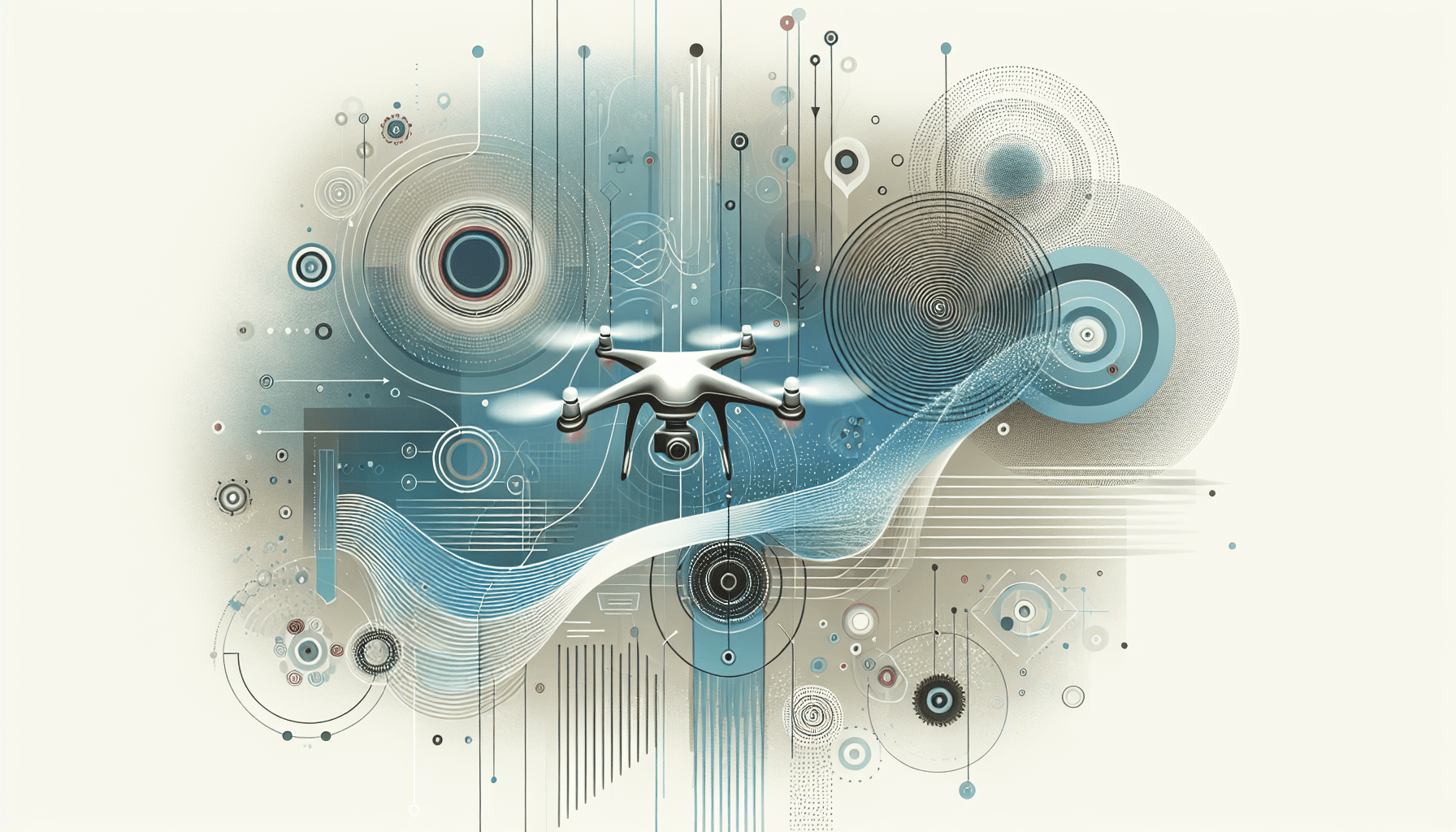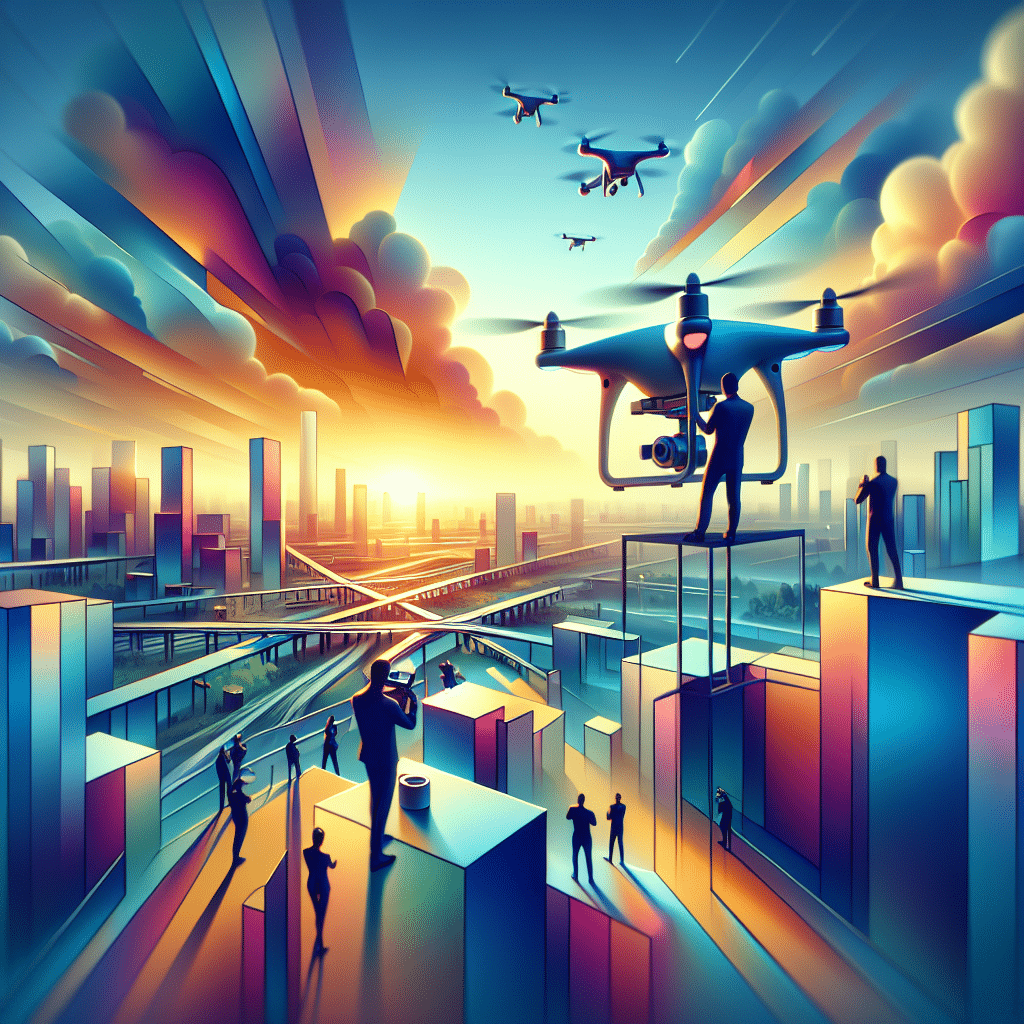Drone Marketing Strategies That Capture Attention
In This Article
- Drone marketing captures attention using immersive, high-quality aerial visuals.
- Utilising drones enhances brand storytelling, engagement, and audience trust.
- Multiple industries including real estate, tourism, and events lead drone innovation.
- Legal compliance is critical; understand local aviation and privacy laws.
- Small businesses can implement drone marketing using budget-friendly, smart devices.
- AI integration opens new doors for data-driven creative strategies.
- Selecting the right drone depends on your goals, location, and audience.
- The future points toward augmented reality and autonomous drone filming.
- In-house teams can create effective drone content without a dedicated agency.
- Drone storytelling adds authenticity, boosting trust and consumer interaction.
Understanding Drone Marketing
What Is Drone Marketing?
Drone marketing refers to the use of unmanned aerial vehicles (UAVs), commonly known as drones, to capture dynamic visuals that enhance promotional content. These visuals range from cinematic aerial footage of locations to zoomed-in, stabilised angles of products in action. The method elevates marketing by adding a visual layer that is both compelling and engaging. In today’s saturated digital space, drone marketing helps brands cut through the noise and make an unforgettable impression on viewers.

Benefits of Visual Storytelling with Drones
Why Aerial Content Captivates Audiences
Visual storytelling is at the heart of modern advertising. Drones make this narrative approach more captivating through their ability to deliver perspectives that traditional videography cannot match. From panoramic vistas to dynamic tracking shots, drone footage creates a sense of immersion that draws the viewer into the story. This immersive experience heightens emotional engagement and because of its novelty, tends to outperform conventional visuals in metrics like view time, shares, and conversions.
Moreover, the use of drones enhances authenticity. By capturing real landscapes and events as they unfold, marketers can avoid overproduced imagery and instead focus on genuine moments. This strengthens audience trust and fosters a deeper connection with the brand.
“Drone marketing doesn’t just elevate your visuals—it elevates your entire brand narrative.”
Industries Leading Drone Marketing Innovations
The adoption of drone marketing spans a diverse array of sectors. In the real estate industry, for instance, high-resolution aerial tours offer prospective buyers a complete view of a property’s spatial layout, nearby amenities, and overall environment. This leads to faster decision-making and enhanced buyer confidence.
In tourism and hospitality, showcasing resorts, hotels, and natural landmarks via aerial footage adds a cinematic layer that traditional brochures lack. The leisure industry now relies heavily on drones to promote destinations through emotionally stimulating visuals.
Likewise, the event management industry uses drones to capture large-scale events such as concerts, festivals, and sports tournaments. The resulting footage not only documents the occasion but also serves as promotional material for future events, boosting attendance and engagement.
How Brands Use Aerial Videos in Campaigns
Drone marketing plays a crucial role in brand awareness and product launches. Brands are increasingly integrating aerial videos into their social media strategies, e-commerce platforms, and even television spots. These drones capture product demos in scenic outdoor settings, highlight the ambience of retail locations, or provide behind-the-scenes footage that enhances brand relatability.
One common tactic is the “brand vista”—a sweeping aerial shot that metaphorically aligns the expanse of a stunning landscape with the brand’s vision. Whether it’s a fashion label shooting in the dunes of Namibia or an adventure gear company scaling alpine peaks, drones bring the visual metaphor to life. Furthermore, consumers respond positively to this format as it feels aspirational yet authentic.
Creative Examples of Drone Storytelling
Innovative storytelling is core to successful drone marketing. Sports brands often use drones to follow athletes performing in extreme environments, like snowboarding down cliffs or riding waves. These shots are accompanied by narration or user-generated audio that adds a personal dimension to the visual spectacle.
Another creative use is in cinematic teasers. A thriller series on a streaming platform might open with an aerial shot slowly descending into a fog-covered forest, building suspense while drawing viewers in. These strategic uses of drone imagery ignite curiosity and keep audiences engaged longer.
Additionally, eco-friendly brands have embraced drones to document their sustainability efforts. Capturing reforestation projects, clean energy installations, or marine conservation operations from above helps bring transparency and emotional weight to these initiatives, fostering trust among ethically conscious consumers.
The Future of Drone Technology in Marketing
As drone technology evolves, so too will its applications in marketing. The upcoming trends include integration with augmented reality (AR), enabling hybrid experiences where drones capture live footage that gets digitally overlaid with interactive elements. This can revolutionise events, showroom experiences, and product demos.
Moreover, advancements in drone automation will allow marketing teams to deploy drones pre-programmed to follow designated flight paths, capture footage autonomously, and even edit basic video drafts in real time. This reduces production time and makes drone marketing more accessible to businesses with modest budgets.
Hydrogen-powered drones, ultra-light aircrafts with extended flight times, and improved stabilisation technologies are all poised to redefine what drones can do for marketers. In the near future, we can expect brands to use drones not just for visuals, but also for delivery, live-streaming, and audience interaction.
Cost-Effective Uses for Small Businesses
While enterprise-level marketing campaigns often invest heavily in drone production, small businesses can also benefit from this tool without overspending. Several affordable drones now offer 4K video, GPS-assisted flight, and stabilisers right out of the box. These features make it feasible for sole traders, SMEs, and startups to produce polished content in-house.
For example, a small café could use a drone to showcase a bustling weekend patio along a picturesque street. Likewise, a fitness instructor might create online programme promos filmed from above during a beachside session. Storytelling through this format not only costs less than professional shoots but often garners more engagement.
Entry-level drone marketing campaigns can be further enhanced by editing these clips with freely available tools, adding music, voice-overs, and transitions. Platforms like Instagram, YouTube Shorts, and TikTok are ideal for sharing such short-form aerial content, which often performs well in terms of audience reach and interaction.
Challenges and Legal Considerations
Despite its appeal, drone marketing comes with a set of challenges and responsibilities. First and foremost are regulatory limitations. In the UK, Civil Aviation Authority (CAA) guidelines dictate that commercial drone usage requires certification and compliance with privacy laws. Businesses must ensure operators are licensed and that drones do not breach restricted airspace.
Moreover, inclement weather, signal interference, and battery limitations can impede production plans. It is essential to conduct pre-flight checks, maintain equipment, and have contingency plans in place.
Ethical considerations also arise. Capturing individuals without consent can constitute a violation of GDPR or harassment laws. As such, marketers should always clear permissions, especially when shooting in public or residential areas.
Finally, businesses must weigh the risk of drone crashes, especially during live events or near infrastructure. Liability insurance and careful flight planning mitigate these concerns and allow for smooth deployment.
Combining Drones with AI for Data-Driven Content
The synergy between drones and artificial intelligence is revolutionising content strategy. With AI-powered analytics, drones can collect behavioural data such as foot traffic patterns, audience responses, or environmental changes, all of which inform campaign refinement.
Some drones now come equipped with object recognition capabilities, allowing real-time audience segmentation. For instance, a drone might adjust its filming angles based on how many people are gathered around a particular product display at a trade show.
Moreover, AI editing tools can process drone footage, isolate the best shots, apply enhancements, and generate multiple variations optimised for different platforms. This dramatically reduces post-production bandwidth, especially in teams with limited resources.
Choosing the Right Drone for Marketing Content
Selecting the appropriate drone depends on specific campaign needs. For high-end commercial projects requiring cinematic visuals, models like the DJI Inspire series offer interchangeable lenses, dual-operator controls, and 5K+ resolution. These are ideal for TV adverts or high-budget ecommerce launches.
For social media content or agile environments, compact drones like the DJI Mini series strike the right balance between cost, portability, and quality. They’re also quieter and less intrusive during filming, making them ideal for urban settings or events.
Modular drones with custom payload capabilities can accommodate various camera mounts and sensors, offering versatility across campaigns. Marketers should also consider flight time, range, stabilisation tech, and AI integration when making their choice.
Technical support, warranty coverage, and compatibility with editing software are additional factors that influence long-term utility and ROI. Research and pilot testing offer valuable insights before procurement.
Conclusion: Elevate Marketing With Aerial Innovation
[CONCLUSION_CONTENT]
Drone marketing isn’t just a passing trend—it represents a deep shift in how brands communicate with audiences in the digital era. By merging vivid, cinematic content with data insights and strategic narrative, companies can build emotional connections that encourage engagement, loyalty, and action. Whether you’re a global enterprise or a local artisan, the power of aerial storytelling is within reach.
Great guide on drone-technology-for-marketing-leveraging-visual-storytelling – Community Feedback
How are drones transforming marketing campaigns?
Drones enable marketers to create stunning aerial visuals, capture unique perspectives, and engage audiences with immersive storytelling, making campaigns more impactful and memorable.
What industries benefit most from drone marketing?
Real estate, tourism, events, and lifestyle brands gain significant advantages by using drone footage for showcasing properties, destinations, and experiences.
Are drones cost-effective for small business marketing?
Yes. As drone technology becomes more affordable, small businesses can leverage high-quality visuals to compete with larger brands without excessive costs.

